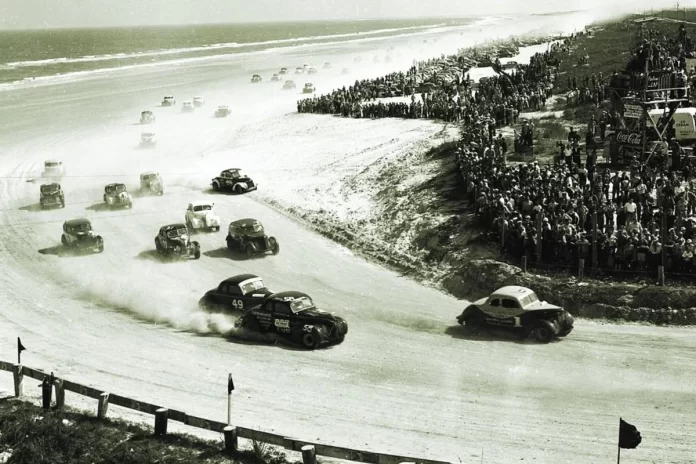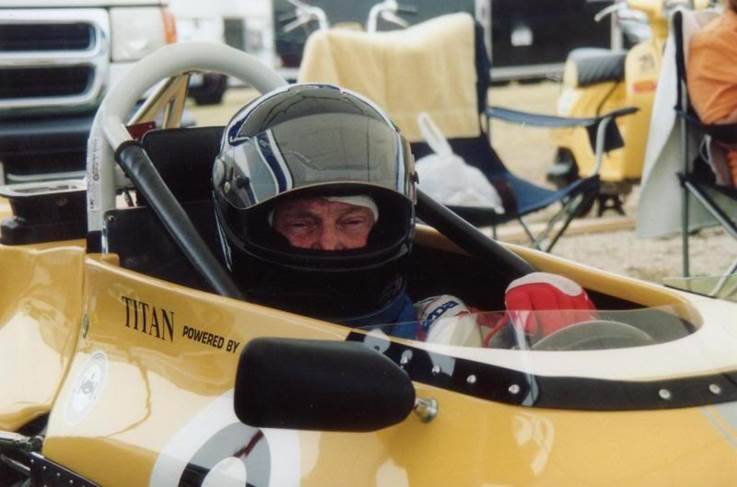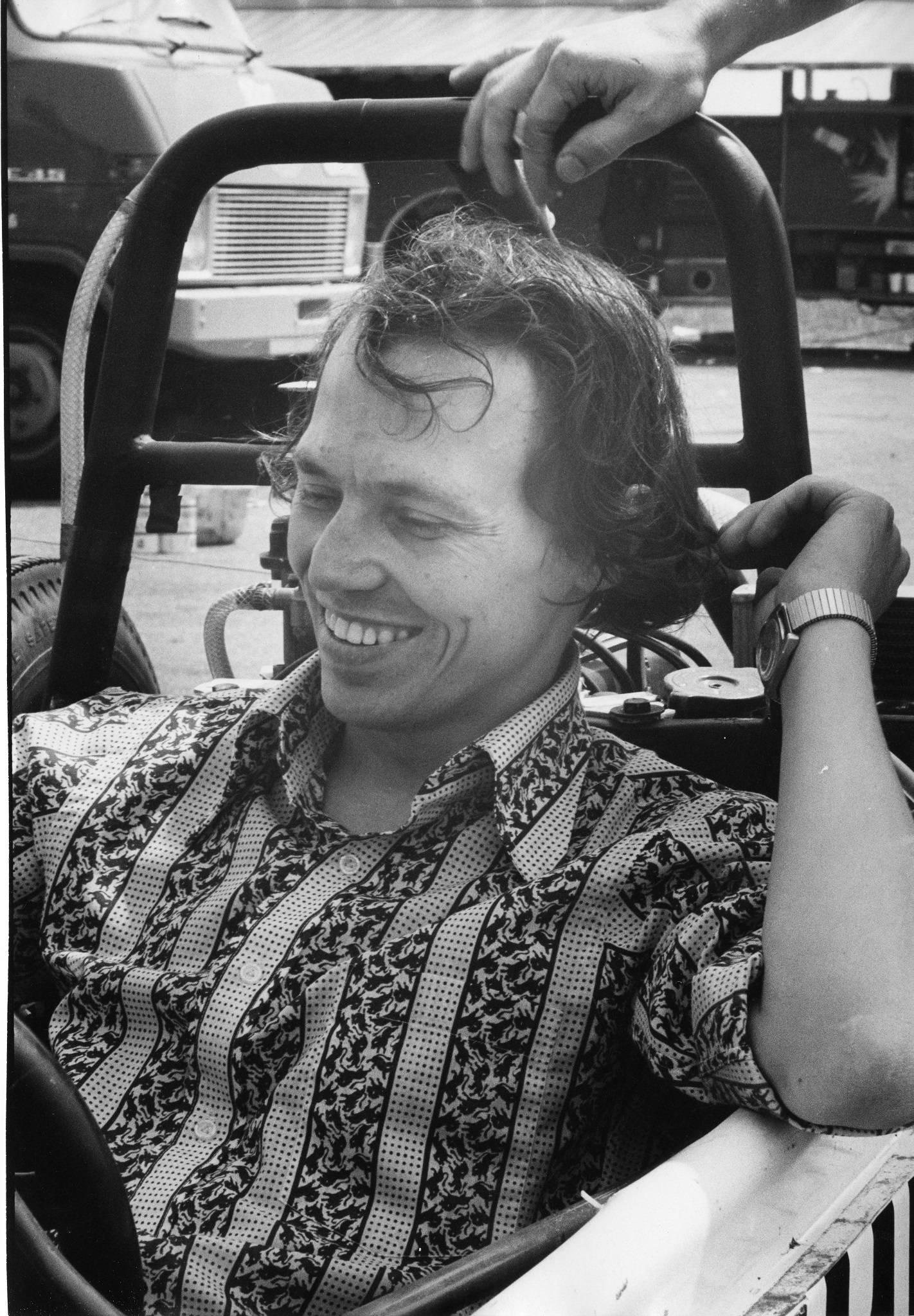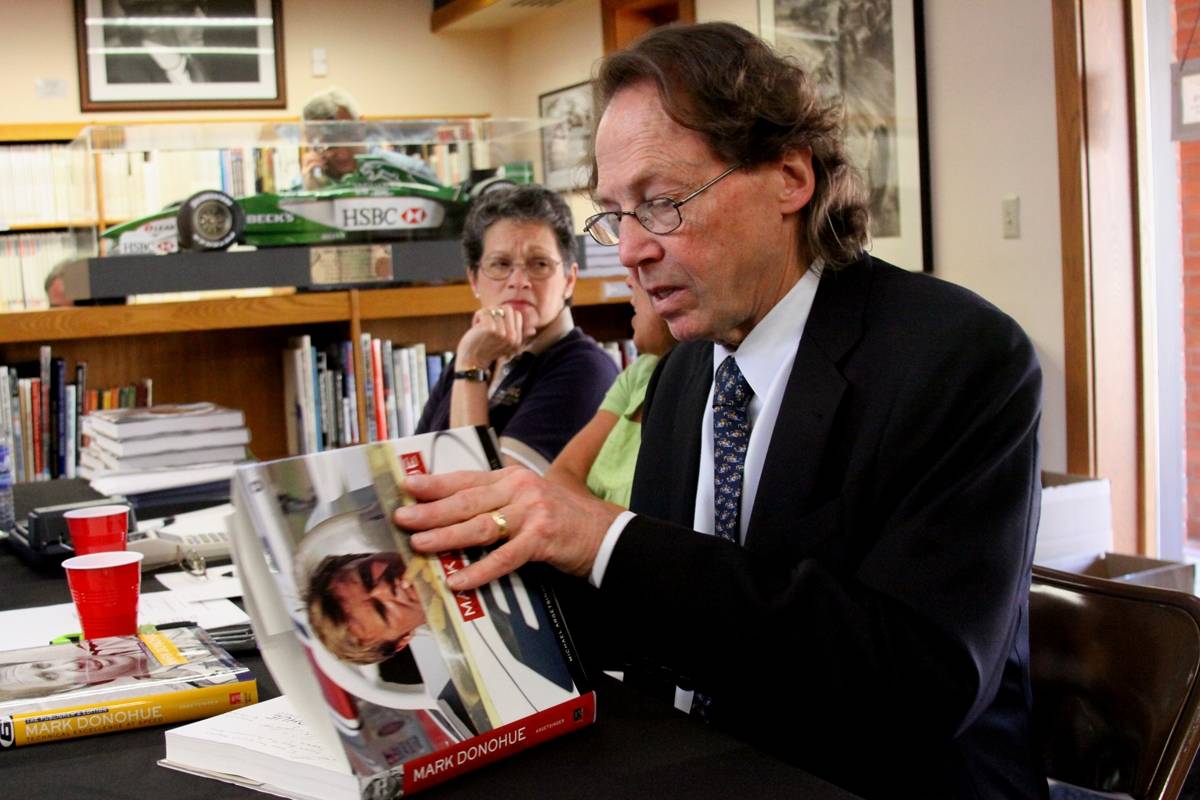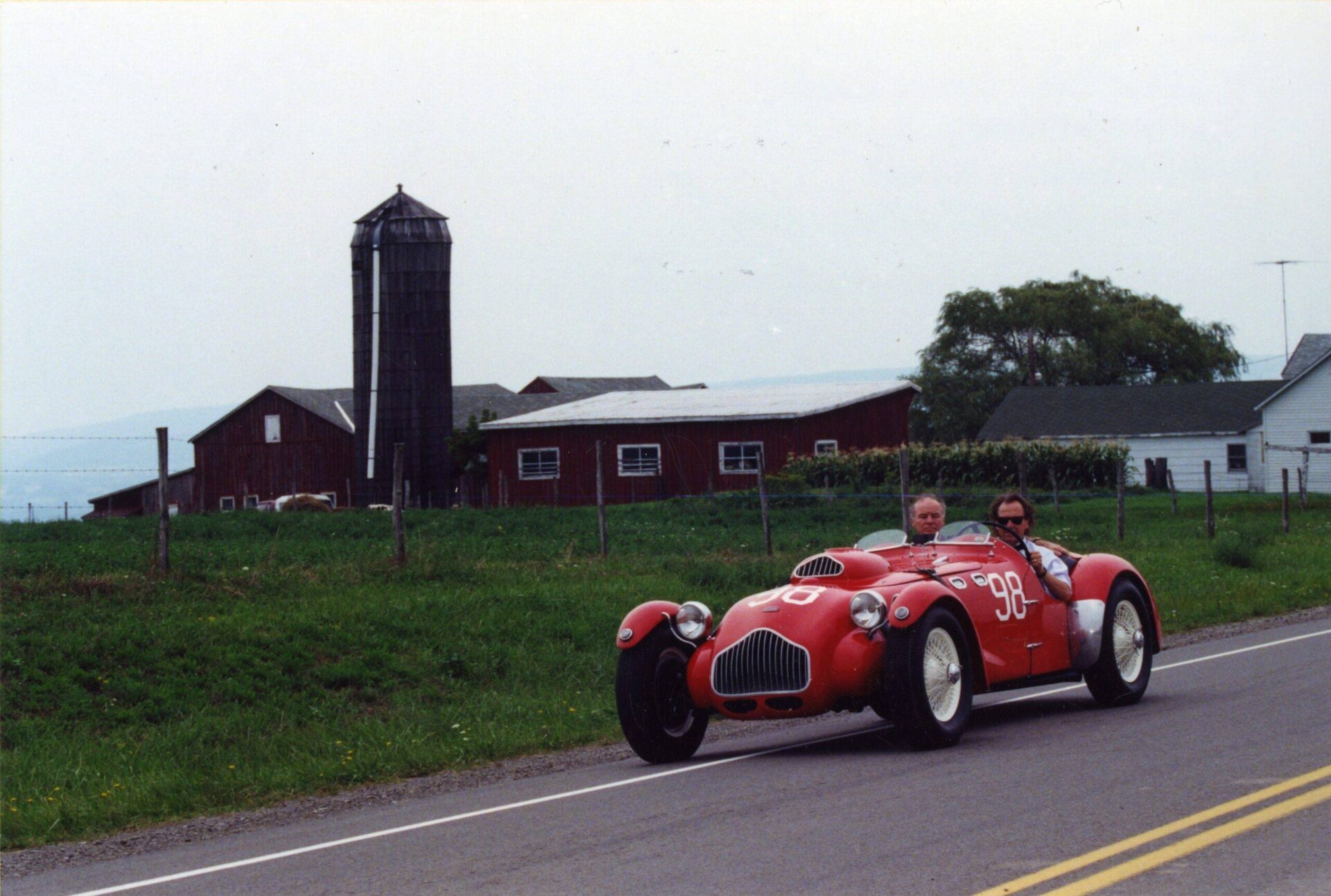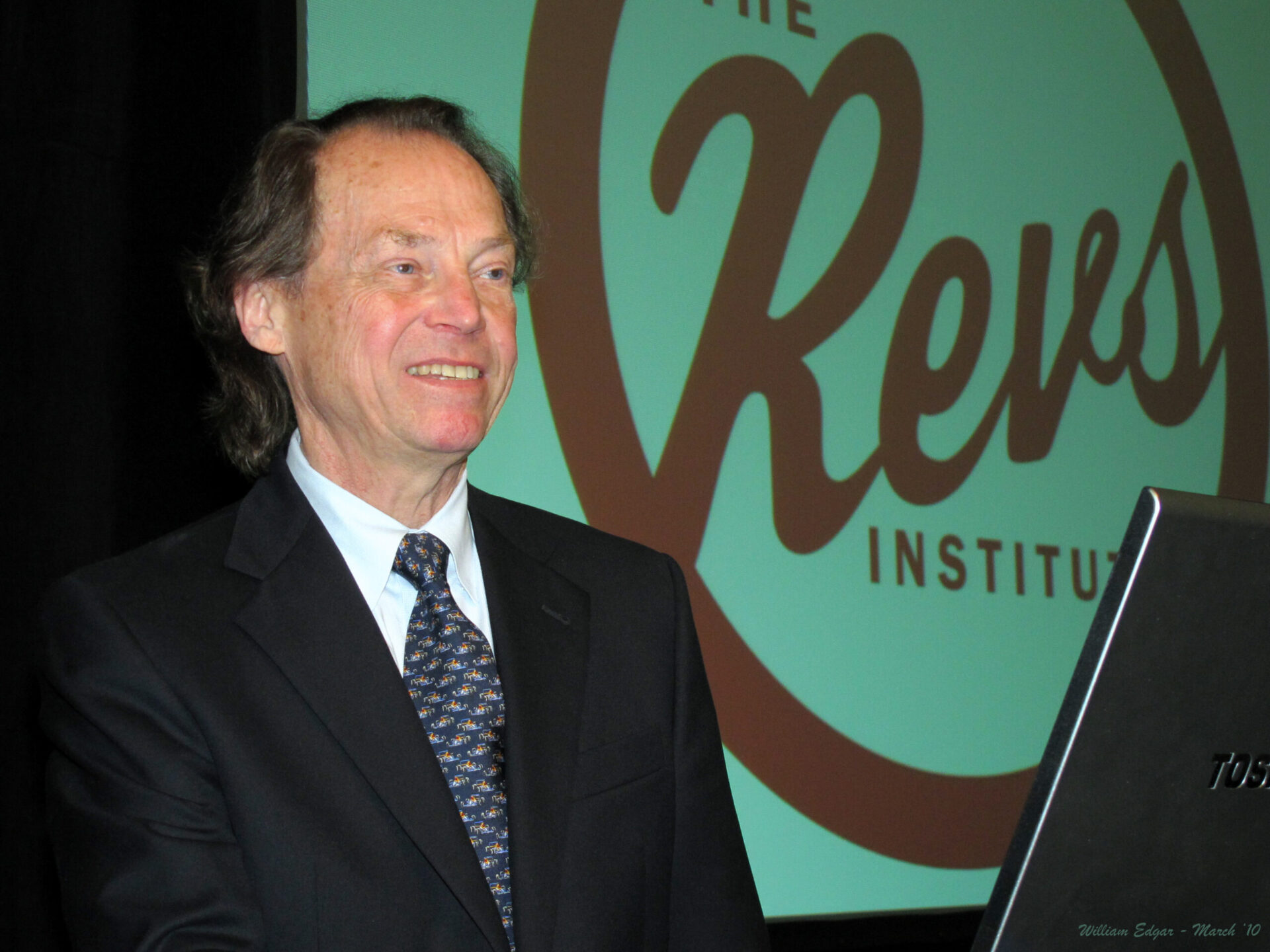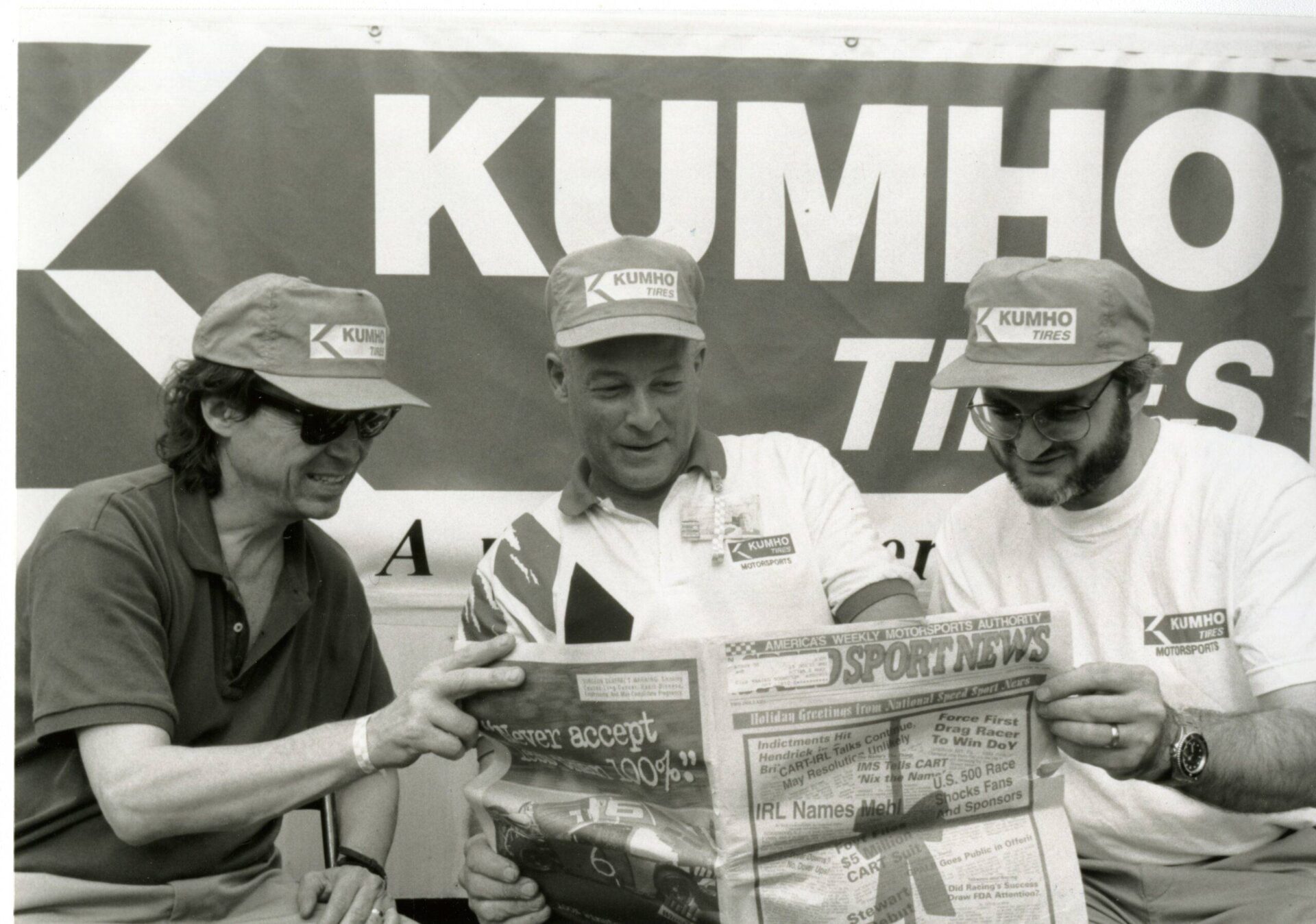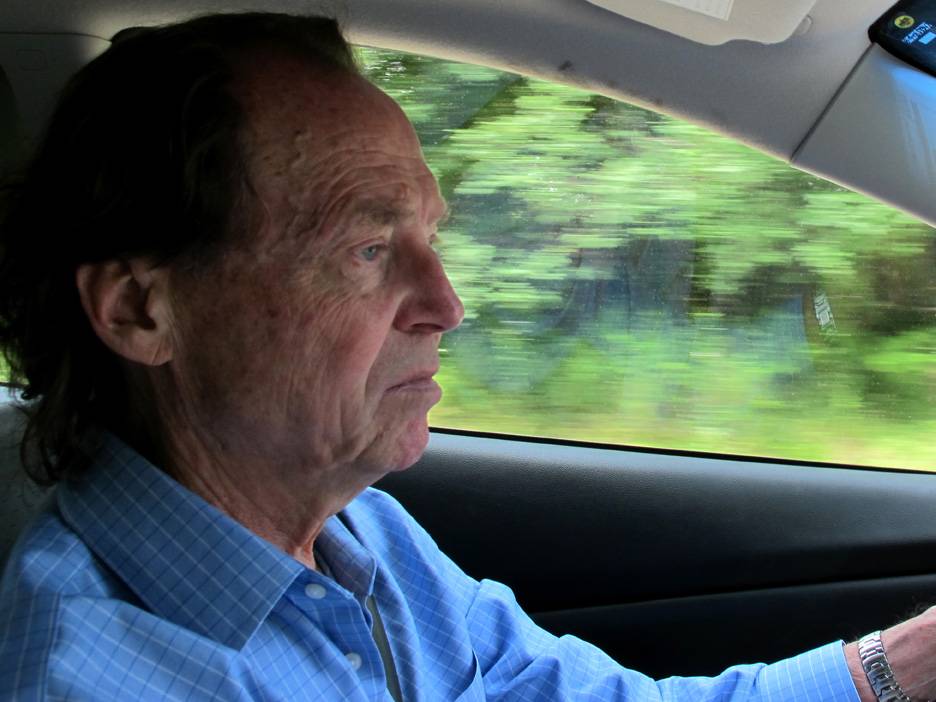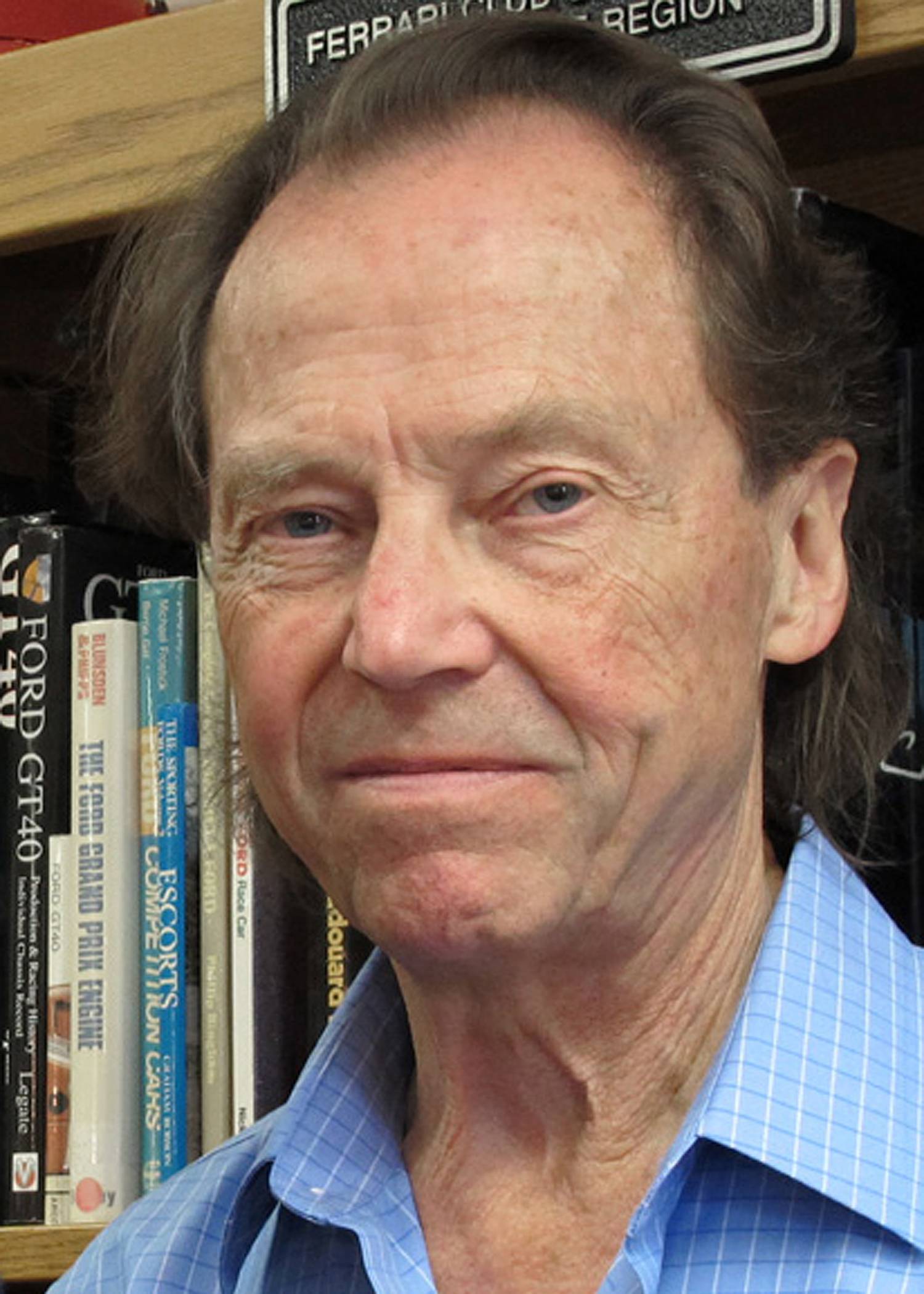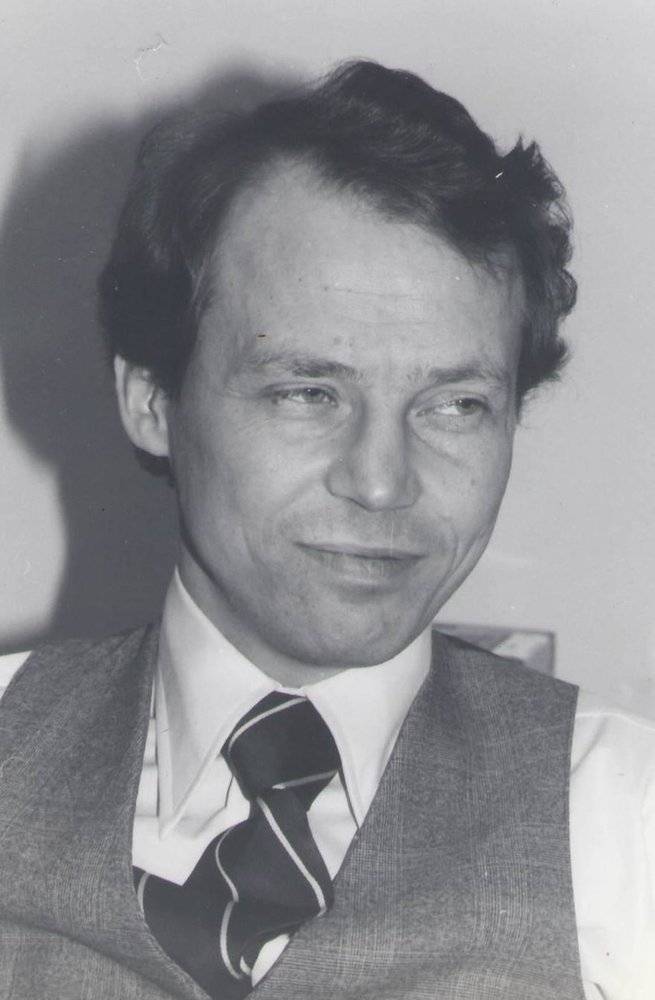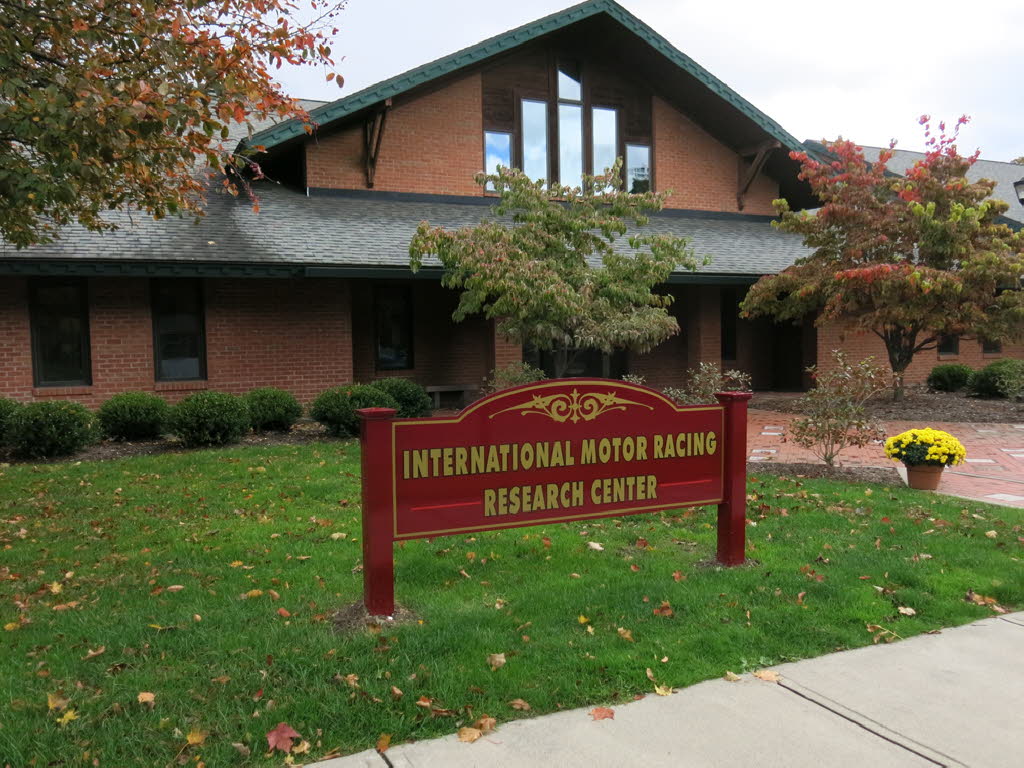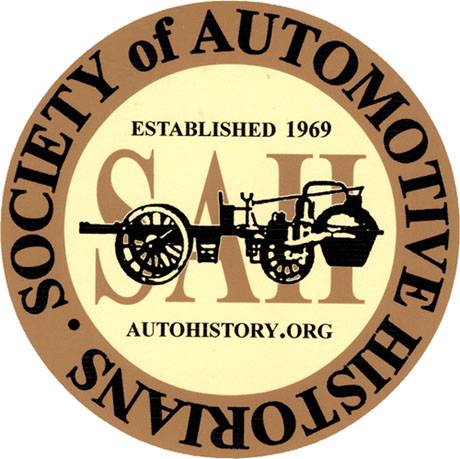Buz McKim’s presentation explores the racing career of NASCAR’s iconic founder William “Bill” France and the origins of NASCAR in the late 1940s and early 1950s. Big Bill’s exploits are legendary and his captivating and sometimes overwhelming style belie his extraordinary contribution to the evolution of professional motor racing in America. McKim’s presentation is a deeply informed and sympathetic portrayal of the man and his accomplishments.
Bio

Buz McKim, formerly historian at the NASCAR Hall of Fame in Charlotte, NC, is a distinguished figure in the motor sports world and a much sought-after speaker at motorsports gatherings. Mr. McKim served as director of archives for International Speedway Corporation and as coordinator of statistical services for NASCAR. He is the author of The NASCAR Vault: An Official History Featuring Rare Collectibles from Motorsports Images and Archives.
McKim’s Legends of Racing Radio Show is a hugely popular forum for enthusiasts of the sport. Buz McKim was our Keynote Speaker for two prior Argetsinger symposia.
Notes
Transcript
[00:00:00] Break/Fix’s History of Motorsports series is brought to you in part by the International Motor Racing Research Center, as well as the Society of Automotive Historians, the Watkins Glen Area Chamber of Commerce, and the Argettsinger family. Bill France and the Origins of NASCAR by Buzz McKinn. Buzz McKim, formerly historian at the NASCAR Hall of Fame in Charlotte, North Carolina, is a distinguished figure in the motorsports world and a much sought after speaker at motorsports gatherings.
Buzz served as director of archives for the International Speedway Corporation and as coordinator of statistical services for NASCAR. He is the author of The NASCAR Vault, an official history featuring rare collectibles from motorsports images and archives. Buzz’s Legend of Racing radio show is a hugely popular forum for enthusiasts of the sport.
Buzz was also our keynote speaker for two prior Argettsinger Symposiums. Buzz’s presentation explores the racing career of NASCAR’s iconic founder, Bill France, and the origins [00:01:00] of NASCAR in the late 1940s and early 1950s. Big Bill’s exploits are legendary and his captivating and sometimes overwhelming style belay his extraordinary contribution to the evolution of professional motor racing in America.
Buzz’s presentation is a deeply informed and sympathetic portrayal of the man and his accomplishments. Our next presenter really doesn’t need any introduction, particularly here at Watkins Glen. Welcome back, Buzz McKim, who had a great effect on NASCAR history, been the historian at the NASCAR Hall of Fame museum.
I’ve been involved in more books and more productions than I can even think of, and it even paints race cars. That’s how I got started. And also it was a very important role in the archives of NASCAR. We’re going to be talking about an interesting topic, one that always is a little… Interesting to hear about from different perspectives.
And that is Bill France and the origins of NASCAR. Buzz, it’s yours. Take it away. [00:02:00] Yeah, I, uh, headed up the Archive Department at Daytona for a number of years and then went over to the NASCAR side and was the Director of Statistical Services for a while. And then I was able to go to Charlotte and become the historian for the NASCAR Hall of Fame when they were just breaking ground, basically.
So it was my job to go out and find all the items that… We’re in the hall. That was like three years of nonstop treasure hunting. And, uh, that was really, really cool. But today we’re going to be talking about Bill France and the founding of NASCAR. It’s hard to imagine how one person can have such an effect when you think about how big NASCAR is and what they started out with William Henry Getty.
France was born in 1909 in Washington, DC. He came from a line of bank clerks. His dad liked the name Getty because it meant strength and power. And ironically, Bill turned out to be six foot five. He loved motorcycles, he loved racecars, he wanted to drive in the Indy 500, and he was kind of a black sheep of the family because of that, and that he wasn’t following the family line.
He decided he was going to do it his own way. H. A. [00:03:00] Branham, in his book, Big Bill, The Life and Times of NASCAR founder Bill France Sr., wrote about heritage of the France family, and it says here, Big Bill seemed appropriate, indeed, when viewed within the context of his ancestry on his mother’s side. His eighth great grandfather lived life large, to say the least.
That was James Graham, the fifth Earl and first Marquise of Montrose, known in Scottish history as the Great Montrose. So Bill was directly related to the Great Montrose. So people were expecting great things out of him. Now Graham, in the 1600s, he was a Scottish nobleman and a soldier who fought for Charles I.
As the English Civil War developed from 1644 to 1646, and again in 1650, he was renowned for his spectacular victories. Taking foes by surprise via superior battle tactics. Now he must have really pissed off Oliver Cromwell that he was fighting with. Because he was known for being beheaded by military dictator Cromwell’s troops in [00:04:00] 1650.
And not only was he beheaded, but his body was cut into four parts and sent to four major towns in Scotland. So he really got under some people’s skin. Ten years later when the monarchy was restored following Cromwell’s death. King Charles II took the throne, and James Graham’s body parts were actually collected and buried with great ceremony at St.
Giles Cathedral in Edinburgh. That burial area is known as the Montrose Isle, where the Dukes of Montrose are interred, and that was part of Bill’s family. Like I said, all he wanted to do was drive. He wanted to race. When he was 16, he took his father’s car to the Laurel, Maryland racetrack. This was a mile and a quarter track.
It was a board speedway. It was made out of 2x6s laid up on edge. The board tracks were all the rage back in that part of the century. And the motorcycles and the IndyCars of the era raced on those boards. They had 48 degree banks on that turn. Now Daytona’s only 31 degrees. But 48 degrees and Bill got to know the people at the track and they would let him take his dad’s car around the track and his dad got all P.
[00:05:00] O’d and went over to the Ford dealer and wanted to know why his tires were wearing out so quick. Bill never bothered to tell him he was out there playing hot laps. Bill drove in the uh, Maryland area. He had a little sprint car that he raced. And then in 1934, he decided that if he was going to work on cars, he might as well do it where it was warm.
So he decided to move to Daytona Beach. Now the story goes that he was on his way to Miami, and that the car broke down, and that they stayed in Daytona. And Bill always said that that was a bunch of baloney, because he was a mechanic, and he said, I could have fixed the car, and we could have gone to Miami.
But we came to Daytona because of the racing background, and they had family in the area. So they went ahead and they stayed in Daytona, and that’s where he found his fortune. And he went to work for a, uh, Buick dealership as a front end specialist, and then later got his own gas station. And this was during the Depression, when things were really, really tight.
And you talk to some of the old timers in Daytona, and they’ll tell you that when Bill had his station, if you wanted to get your car work done, you would have to front him the money for the parts. And then pay him for the labor when the job was done, because Bill did not have the money to get the parts.
And there was another time when there was a [00:06:00] tire that was sitting on a, uh, display out on the island out in front of the gas station. And it was on consignment, and Bill had sold the tire. One day the tire salesman rode by and saw the tire was missing. Sammy Packard, who worked in the gas station at the time, told me the story.
He said, Bill went and hid in the ladies room because he didn’t have the money to pay for the tire. So the next day, the tire guy came by and Bill had the money and he went ahead and paid him. But, I mean, that’s how tight things were. In 1936, the city of Daytona put on its first stock car race. Through 1935, from 1903, they had the last speed record runs through the measured mile.
There was no stock car racing at all up until 36. Malcolm Campbell was doing close to 300 miles an hour in people’s backyards in 1935, and the city of Daytona decided that it was time that they had to find another place to play. So they went to Bonneville Salt Flats. The rest is history there. But in 1936, a guy named Sig Hogdahl, who was a land speed record run guy, first guy to run 180 miles an hour, he went ahead and came up with an idea for a stock car track on the beach, using half the beach and [00:07:00] half State Road A1A.
So Bill went ahead and entered the race and came in fifth, but the city lost 22, 000 on that race in the middle of the depression. So they were immediately out of the stock car business. So for 1937, the local Elks Club put on the race and they lost their butt. The winner made like 50 bucks. So for 1938, they didn’t have a promoter and Bill France being a race driver and coming in fifth in that first race really got him fired up about racing on the beach.
There’s a guy named Ralph Hankinson, who was a promoter, he was the greatest promoter in the country. And he wintered in Orange City, which is about a half hour from Daytona. So Bill thought he’d go ahead and call Collect. He did not have, this quarter right here, could have bought NASCAR in 1938. He didn’t have the quarter to make the phone call, so he called Collect.
And Hankinson didn’t know who this Bill France guy was, so he refused a phone call. So Bill was considering doing it himself. He didn’t have the money, and he was complaining to a guy he knew named Charlie Reese, who was kind of a gangster, really, he had a lot of money. But he talked to Charlie about the race, and what are we gonna [00:08:00] do, so…
Charlie Reese said, well, you know people and you know the sport and if you do the legwork, I’ll put the money up. So they ended up putting on the 1938 race and they split a 100 profit. And Bill thought, that’s a pretty darn good deal. They charged 50 cents. So, uh, for the next year, they went ahead and they charged a dollar and they split a 2, 000 profit.
Bill said, this is getting a lot better. Bill continued to race and he became the 1940 unofficial stock car champion. There were no official champions back in those days because of the sport. It was just scattered. There was no uniform rules. There was just no organization to it. There’s no credibility to it.
Bill raced one time in Maryland. They had a big race advertising 500 to win. So Bill drove his heart out that day and finished third and he got 10. So he asked the promoter, he said, well, what about this money? What about this 500 bucks? So the winner got 50 bucks. And the promoter said, oh, I just said 500 dollars to make things interesting.
Yeah, there was no credibility. So that always stuck in his craw. And Bill was a very honest guy and he didn’t care for being screwed like that. During the war, he went to work at the [00:09:00] local boatyard, building sub chasers. He had a couple of little kids at home, so he got a job at the boatyard, didn’t have to go out into the service.
That worked out pretty good for him. Bill went ahead and continued to race until 1946. Then he quit driving, and he went into promoting full time. And he got an idea for a race up in Lonsdale, Rhode Island, in October of 1947. There was a guy named Bill Tuthill, who was a great promoter in the Northeast, and they came up with an idea for kind of a North versus South.
Tuthill’s guys against Bill France’s guys. This was a third of a mile high banked asphalt track, and nobody thought that it would ever work, because stock cars had never been run on asphalt. They figured there’d be no passing, and you know, maybe you might get 500 people to show up if you’re lucky. They went ahead and charged 1.
20, and they got nine. people to show up for this race. So Tuthill and France decided that if this thing became organized, it could be something really special. They had an idea to bring some credibility to the sport. And in December of 47, just six weeks later, they [00:10:00] had a four day series of meetings at the Streamline Hotel.
In Daytona, they banged out the rules and they selected the heads of different committees and all that sort of thing. And they came up with NASCAR. For that deal there, Bill gave a stirring speech. In fact, it’s so stirring that it covers one whole wall in the Research and Development Center there in Charlotte.
The way he worded this is pretty amazing. He says, Stock car racing has got distinct possibilities for Sunday shows and we do not know how big it can be if it’s handled properly. We can go the same way as big car racing, Indianapolis. And I believe stock car racing can become a nationally recognized sport by having a national points system.
Stock car racing as we’ve been running it is not, in my opinion, the answer. We must try to get track owners and promoters interested in building stock car racing up. We’re all interested in one thing, and that is improving the present conditions. And the answer lies in our group right here today to do it.
With that, he was awarded the position of President of NASCAR. Tudhill became the Executive Secretary. Interesting [00:11:00] that NASCAR was not the first name. It was an acronym that they wanted to call the organization. And then after the first vote, somebody realized that there was a group in Georgia that had the same name.
So they had to go back and come up with a different name. So, Red Vogt, who was the first superstar mechanic, he built all the moonshine cars and all that stuff. He came up with the name NASCAR, National Association for Stock Car Auto Racing. A lot of people didn’t like it because they said it sounded like NASCAR.
But then on the second reading, they went ahead and they adopted the name NASCAR. And that was in December of 47. And it was incorporated in February of 48. Right from the beginning, it was great. They came up with a uniform set of rules. They came up with a point fund. They came up with a national champion.
I have an entry blank from High Point, North Carolina from 1941. And on one of the lines, it says, Just call yourself whatever you want. We’re just looking for good stories for the newspaper. You know, you could say anything you wanted to back in those days. And it really didn’t make any difference to anybody.
Bill went ahead and they did away with that sort of thing. And he brought credibility to the sport. And it’s funny how he talked about [00:12:00] Indianapolis and the big car racing. And uh, so here are these guys, they’re a bunch of hillbillies, a lot of them. Didn’t have two nickels to rub together. They’re talking about being as successful as Indianapolis.
And that’s just about how it is now. In 1965, Bill said that NASCAR would be as big as the stick in ball sports by the turn of the 21st century. And he didn’t miss it by much, and he was a visionary, very much a visionary. Well, I’d say he was 6’5 very booming voice. He knew who to schmooze and how to schmooze them.
And he was the major, major guy in that regard. He got an awful lot of friends that way. He was very honest, very charming. He could talk you into anything. There’s a lady that is working in the ticket office at Daytona Speedway, Lightning Epton. She’s 103 years old. And she still goes to work every day. And she’s been working for NASCAR since the 1950s.
And that’s the kind of loyalty that Bill instilled in people. It’s pretty amazing to see how things grew up over the years, and what NASCAR has become. And now they’re even talking about the space deal, too. So there’s no telling how far NASCAR is going to go. They had that car go [00:13:00] to Le Mans this year.
That’s quite an operation there. Let me tell you, in closing, what kind of guy Bill was. In 1972, they had the race at Talladega, the Talladega 500. Bill talked to a fella named Lynn Hendershot that worked for NASCAR. He gave Bill the entry blanks and said, Divide the prize money up into 60 spots. And Lynn said, Why 60?
He said, We’re going to run 60 cars at Talladega this year. And he said, Well, I think you’re making a big mistake. And Bill got P. O. ‘d. He didn’t like being told he was wrong. Lynn said, we’ve had a lot of problems with Talladega with only 50 cars. I think you’re making a big mistake here. He said, well, if you don’t like my opinion, you can just hit the trail.
So Lynn went ahead and divided it up into 60 spots. And during the race, they had a huge pileup on the backstretch. And it destroyed about half the field. And Bill needed those cars to make his next race. And everybody was racing on a shoestring back in the 70s. There was only a couple of cars that really had a big budget and big sponsors and that sort of thing.
Everybody was running kind of foot to mouth. Lynn said, I’m sitting up in the press box and all of a sudden I get a tap on the shoulder and it’s the tall man. That’s what they [00:14:00] called Bill around the track, the tall man. And then he said, the tall man said, we need to go for a ride. So they got down to Bill’s station wagon and they went down into the pits.
And Bill went ahead and wrote a check for every one of those wrecked race cars. Because he knew it was his fault. Those guys got tied up, got all tore up. So it cost him, but he did the right thing. And he had a full field for the next race. But he told Lynn, he says, Do me a favor, don’t ever tell me I told you so.
Ha, ha, ha, ha, ha. But that’s the kind of guy he was. He was extremely benevolent. Very much a civic minded guy. And he certainly has made things interesting. He’s made my life interesting, that’s for sure. And, uh, does anybody have any questions? Yes, ma’am. We are not NASCAR people, but slowly sort of getting indoctrinated through this.
We’re going to get you. Don’t worry about that. We’ll get you. You mentioned that, you know, people could sort of make whatever statements they wanted to make. How, as a researcher, do you then handle that looking back, sort of as an unreliable narrator? Yeah, it’s pretty tough before the war, you know, and up through 1946.
Pretty [00:15:00] much the thing, you know, I mean, there were people that were recognized as national champions, but it’s always in quotes, unofficial, the philanthropic side of the France family. Can you talk a little bit about that hospital? There is massive. I know there’s a lot of family involvement. Oh, yeah, yeah.
They have the France wing of the hospital there, the Halifax Hospital in Daytona and the Betty France Tower. And they have speedy attributes, which is a special fund for kids. And then they have the NASCAR Foundation, which is another child foundation. Most of the drivers have their own foundations. Some of them are for animals, some of them are for abused wives, some of them are for kids, some of them are for this and that.
Giving back is a big, big part of the sport now. Junior Johnson and Richard Childress had given millions to the hospital in Winston Salem, North Carolina for kids. It’s just a big part of the sport. I just want some clarification. Legend has it that Big Bill showed up at the driver’s meeting at Bowman Gray with a pistol.[00:16:00]
The drivers were trying to essentially unionize and get better working conditions. And he stood up in the driver’s meeting and brandished a handgun and said, I’m not afraid to use this if you continue down this path of wanting to negotiate. Is that true? Yes, it is. Okay. That’s all I wanted to know. Ned Jarrett was there and he said it was true.
He had the pistol and he knew how to use it. He wasn’t going to have anybody mess with his baby. In fact, McKenzie did a heck of an interesting book on that subject that he’ll be talking about a little bit later on. Yeah, old Curtis. Curtis Turner was trying to get financing for his Chariot Motor Speedway, and Jimmy Hoffa came along and said, If you unionize the drivers, I’ll give you whatever you need.
So boy, that’s the last thing Bill Franch needed, and it got to be a real civil war, and Curtis was thrown out of NASCAR for about five years. And he was eventually let back in, showed he could still win. Another group got their money together and finished Charlotte Motor Speedway, and Hoffa was never involved.
And it [00:17:00] never got anywhere. Cameron Argettsinger and France were collaborators. Can you talk about that? Oh, yeah! In fact, Bill always thought an awful lot of what the Argettsingers did here. I’m not sure, on an inside track, what it was like, but I know that they had a great respect for each other. Yeah, of course, NASCAR first ran the Glen here in 1957.
So that’s how much that Bill thought of the race. Road racing was extremely rare back in those days. There was only one or two other road races that had ever been run before. Buck Baker went ahead and came here in a 57 Chevy and won. And they ran in the opposite direction. That must have been kind of interesting back in those days.
I was told that France was an official or an organized, uh, community office. Oh, yes. Yeah, I didn’t hear about that, but he was involved with George Wallace back in one of his presidential campaigns because they had built Talladega and Wallace was a big help. So one hand washed the other in that regard.
And Bill was really good about that sort of thing. He got a lot done just by being charming [00:18:00] and giving back and making deals and all that. Bill Rexford was the second NASCAR champion, and he was a northerner. Somehow he gets lost in the shuffle, I think. Yeah, well I heard the story, and I heard this from his co driver, Lloyd Moore, who was from Jamestown, New York.
He said that a year or two after Bill had won the championship, he ran off with his neighbor’s wife. He moved to California to get the heat off. So that was where that happened. But yeah, Rexford still is the youngest NASCAR champion. And Lee Petty, if he had run one more race, he would have been the champion.
I think Petty had some points taken away too, during the year, but Rexford turned out to be the champion and that’s pretty good. Supposedly a Southern sport. And then here’s a Yankee winning the championship only one year in. Thank you Buzz, always. We appreciate that. I wore my lucky underwear today. [00:19:00] This episode is brought to you in part by the International Motor Racing Research Center.
Its charter is to collect, share, and preserve the history of motorsports, spanning continents, eras, and race series. The center’s collection embodies the speed, drama, and camaraderie of amateur and professional motor racing throughout the world. The Center welcomes serious researchers and casual fans alike to share stories of race drivers, race series, and race cars captured on their shelves and walls and brought to life through a regular calendar of public lectures and special events.
To learn more about the Center, visit www. racingarchives. org. This episode is also brought to you by the Society of Automotive Historians. They encourage research into any aspect of automotive history. The SAH actively supports the compilation and preservation of papers. Organizational records, print ephemera and images to safeguard as well as to broaden and deepen the understanding of motorized wheeled land transportation through the modern age and into the future.
For more information about the SAH, visit [00:20:00] www. autohistory. org.
We hope you enjoyed another awesome episode of Brake Fix Podcast brought to you by Gran Touring Motorsports. If you’d like to be a guest on the show or get involved, be sure to follow us on all social media platforms at GrandTouringMotorsports. And if you’d like to learn more about the content of this episode, be sure to check out the follow on article at GTMotorsports.
org. We remain a commercial free and no annual fees organization through our sponsors, but also through the generous support of our fans, families, and friends through Patreon. For as little as 2. 50 a month, you can get access to more behind the scenes action, additional Pit Stop minisodes, and other VIP goodies, as well as keeping our team of creators Fed on their strict diet of fig Newtons, gummy bears, and monster.
So consider signing up for Patreon today at www. patreon. com [00:21:00] forward slash GT motorsports, and remember without you, none of this would be possible.
Livestream
Learn More
Consider becoming a GTM Patreon Supporter and get behind the scenes content and schwag!
Do you like what you've seen, heard and read? - Don't forget, GTM is fueled by volunteers and remains a no-annual-fee organization, but we still need help to pay to keep the lights on... For as little as $2.50/month you can help us keep the momentum going so we can continue to record, write, edit and broadcast your favorite content. Support GTM today! or make a One Time Donation.
This episode is sponsored in part by: The International Motor Racing Research Center (IMRRC), The Society of Automotive Historians (SAH), The Watkins Glen Area Chamber of Commerce, and the Argetsinger Family – and was recorded in front of a live studio audience.
Other episodes you might enjoy
Seventh Annual Michael R. Argetsinger Symposium on International Motor Racing History
The International Motor Racing Research Center (IMRRC), partnering with the Society of Automotive Historians (SAH), presents the Seventh Annual Michael R. Argetsinger Symposium on International Motor Racing History. The Symposium established itself as a unique and respected scholarly forum and has gained a growing audience of students and enthusiasts. It provides an opportunity for scholars, researchers and writers to present their work related to the history of automotive competition and the cultural impact of motor racing. Papers are presented by faculty members, graduate students and independent researchers.
The history of international automotive competition falls within several realms, all of which are welcomed as topics for presentations, including, but not limited to: sports history, cultural studies, public history, political history, the history of technology, sports geography and gender studies, as well as archival studies.
The symposium is named in honor of Michael R. Argetsinger (1944-2015), an award-winning motorsports author and longtime member of the Center’s Governing Council. Michael’s work on motorsports includes:
- Walt Hansgen: His Life and the History of Post-war American Road Racing (2006)
- Mark Donohue: Technical Excellence at Speed (2009)
- Formula One at Watkins Glen: 20 Years of the United States Grand Prix, 1961-1980 (2011)
- An American Racer: Bobby Marshman and the Indianapolis 500 (2019)


